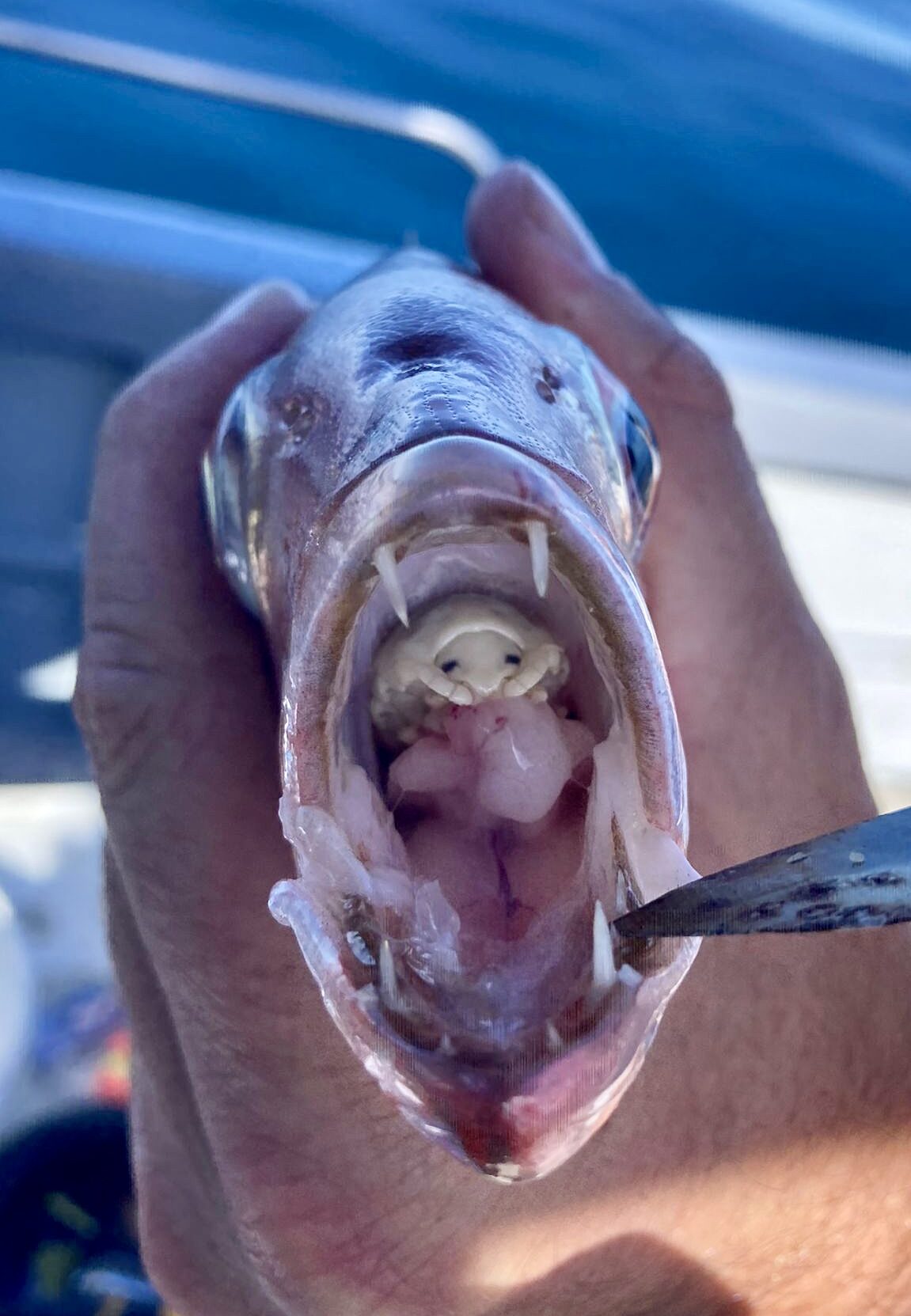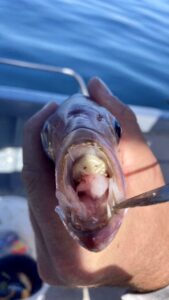
That’s a mouthful: C. springbok in the mouths of South African fish
Posted by on May 1, 2023
Exploring the biology of parasitic isopod Ceratothoa springbok after observing one in the wild.
The Ceratothoa springbok, C. springbok, is a type of parasitic isopod that inhabits the gill chambers of various fish species along the South African coast, which is where it gets its name. This small crustacean has a fascinating life cycle and behavior that is worth exploring. After observing one in the mouth of a Carpenter, Argyrozona argyrozona, we wanted to share some of the fascinating biology of this parasite.

Appearance and Distribution
C. springbok is a small, flat, oval-shaped crustacean that measures up to 15 mm in length. It has a tan or yellowish-brown color and is often difficult to spot due to its size and color. These isopods are found in the waters surrounding South Africa and are commonly found in the gill chambers of South African fish.
Life Cycle
C. springbok has a unique life cycle that involves three distinct stages. The first stage is the free-living stage, where the isopod is still immature and can swim and feed on small organisms in the water. During the second stage, the isopod becomes a juvenile and seeks out a suitable host fish. Once it finds a host fish, it attaches itself to the gill chamber and begins the third and final stage of its life cycle. During this stage, the isopod feeds on the blood of the host fish and reproduces.
Behavior
One of the most fascinating aspects of the genus Cerototha's behavior is its ability to change the sex of its offspring. During its life cycle, a single individual can produce up to 1,500 eggs, which are carried in a brood pouch on the female's body. As the eggs develop, the female can manipulate the sex of the offspring to ensure a more balanced ratio of males and females.
Another interesting behavior of Ceratothoa springbok is its ability to modify the behavior of its host fish. Studies have shown that infected fish tend to swim closer to the surface of the water and show reduced activity levels, which could make them more vulnerable to predators.
Conclusion
C. springbok is a fascinating parasitic isopod that has adapted to live in the mouth and gill chambers of the fish along the South African coast. Its unique life cycle and behavior make it an interesting subject for study, and its impact on fish populations is a reminder of the complex relationships that exist in aquatic ecosystems.
Sources: Hadfield and Smit, 2020. Review of the global distribution and hosts of the economically important fish parasitic isopod genus Ceratothoa (Isopoda: Cymothoidae), including the description of Ceratothoa springbok n. sp. from South Africa. International Journal for Parasitology. 50(10-11). 899-919. https://doi.org/10.1016/j.ijpara.2020.07.001